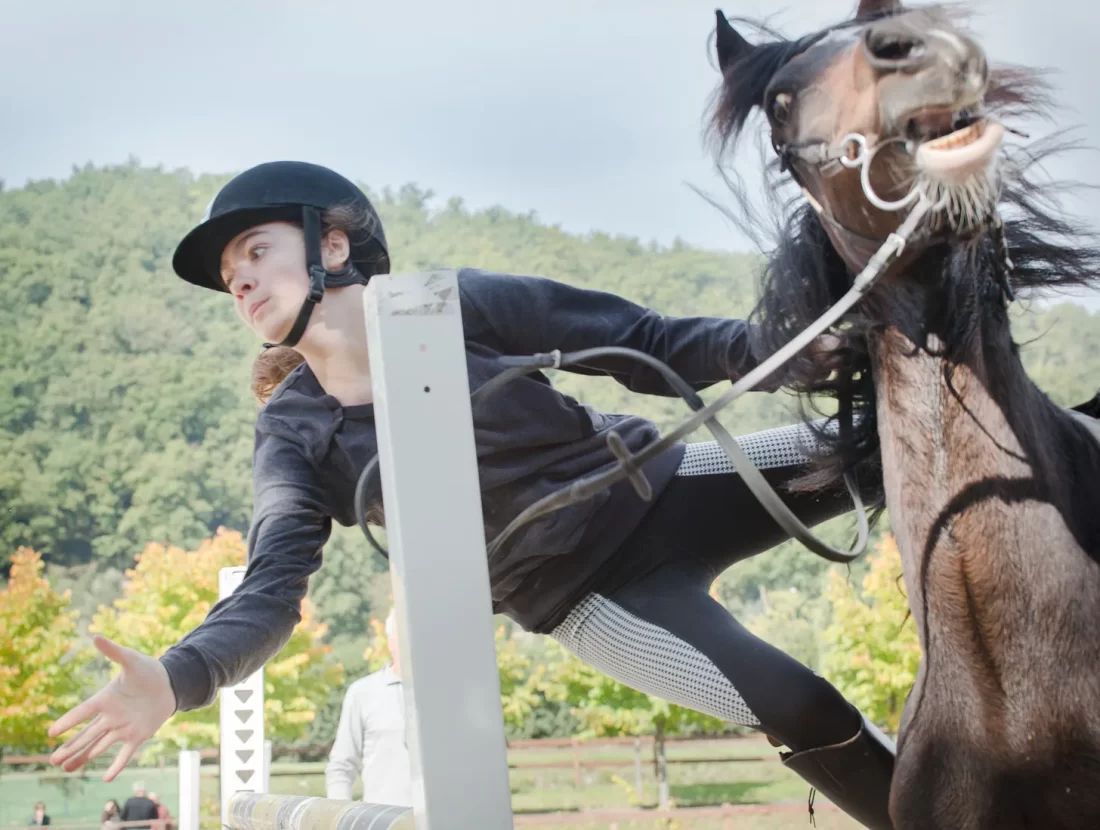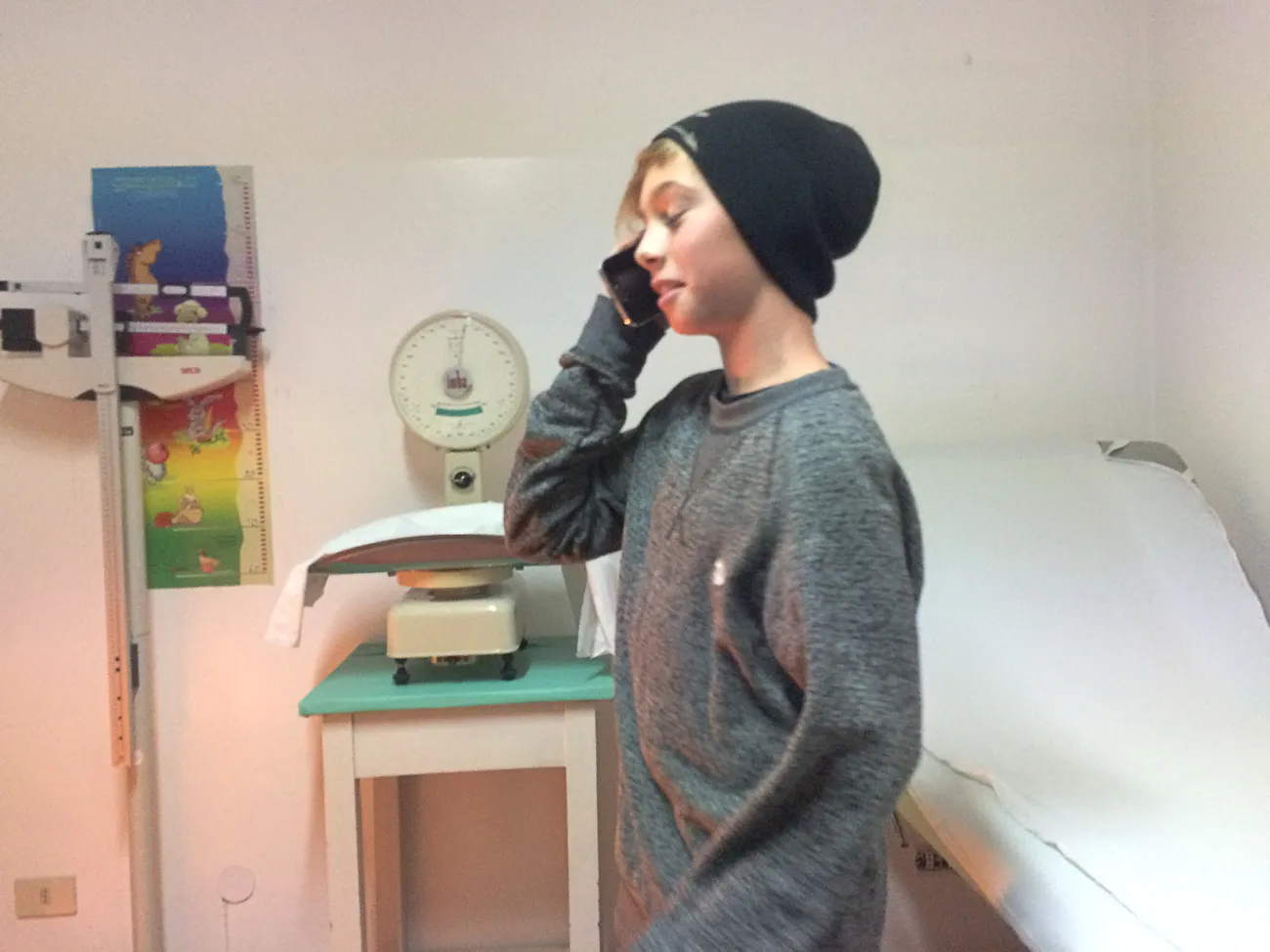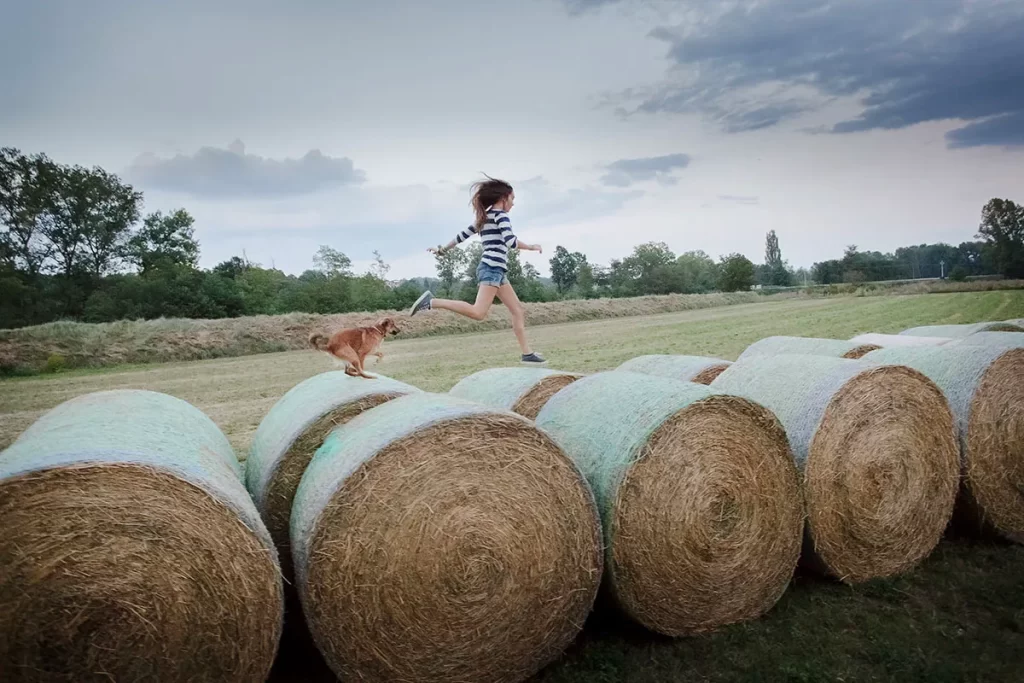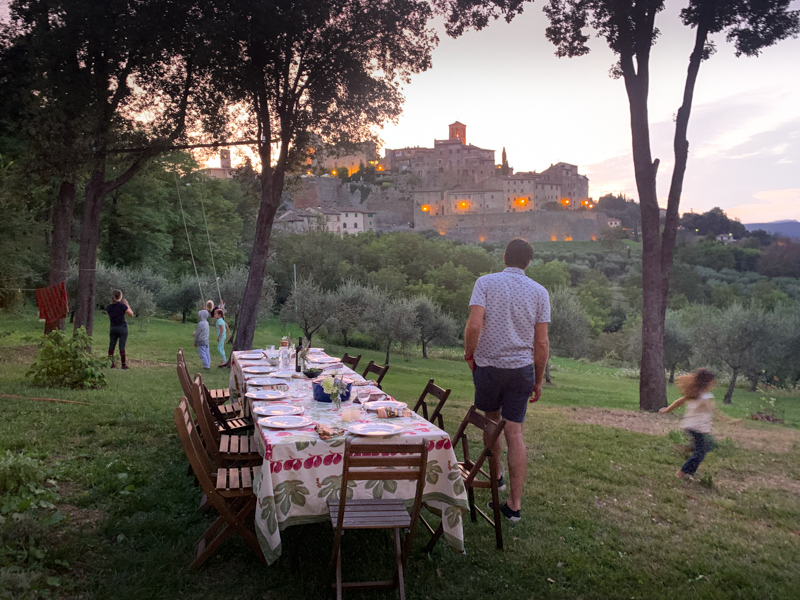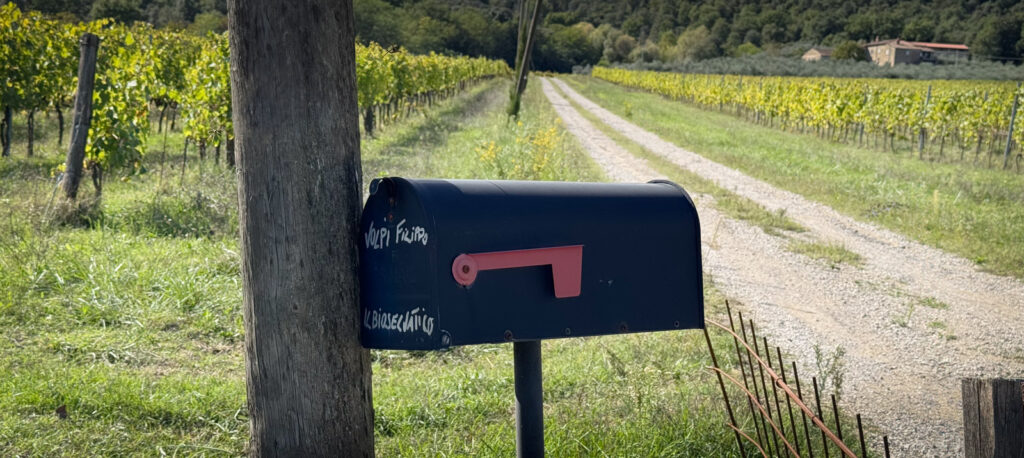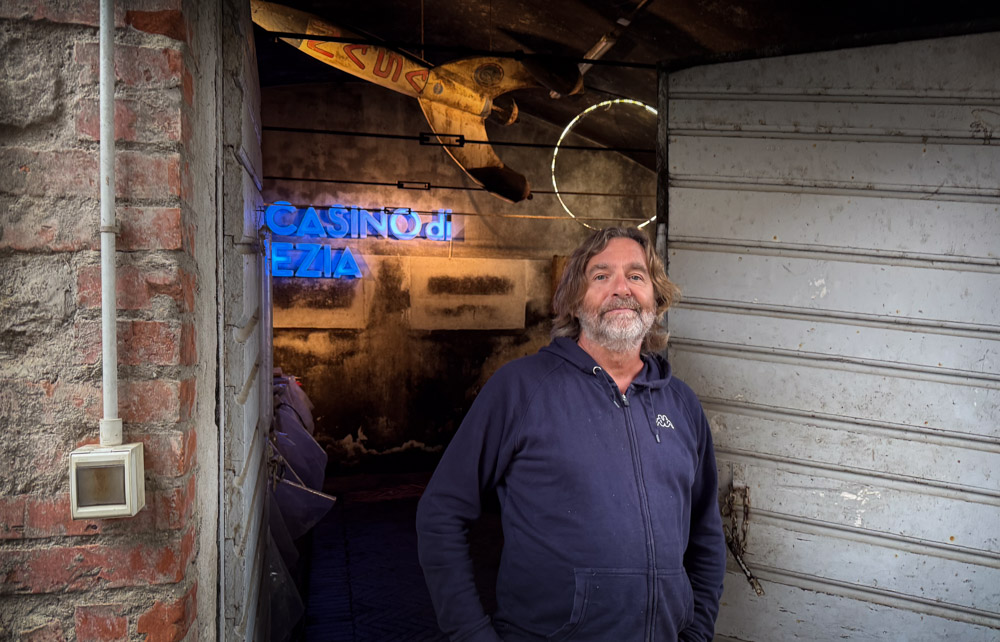February 2, 2025
In
Best Of, Live
By
Nancy
(I often get asked “So, how did you decide to move to Italy?” This is an excerpt of something I’ve been working on that begins the answer to that question with a bit of backstory. If I lived in the States now, my answer might be different—this is a snapshot from twelve years ago. This piece is a bit longer than usual, and is only the beginning of a larger story. I hope you like it, please let me know!)
I would have imagined an Epiphany would be loud. A moment accompanied by a flash of bright light that might leave a permanent mark on an object close by. Something between Harry Potter’s lightning bolt scar, a slice of toast with the image of Christ on it, and the sword in the rock at Rocamadour. The type of word that should always capitalized. All this was if I’d ever considered having an Epiphany at all, which I’d never given much thought to, before it happened.
I was Epiphanied when I was in our kitchen in California on a totally ordinary night while making a simple salad, not even bothering to add a shallot and mustard to the olive oil and vinegar. I sometimes wonder what others are doing the exact moment when they realize that their life, from top to bottom, has to change because they are stuck, and not living the lives they really want to be living. It struck me, with force and complete clarity, between whisking the dressing and pouring it on, and I agreed it was right.
Something had to change. And nothing after was like it was before. And all roads finally led to Italy—but not Rome.
We moved a lot when I was a kid, Michigan to Florida to California, and back, seven different places by the time I was in fourth grade, but nowhere felt like it supported who I was at the core. My parents had me when they were older—Mom was 44, Dad 46—and they went from having a comfortable lifestyle in Lansing, Michigan, with my father owning a general contracting firm and running big interstate freeway projects, to declaring bankruptcy the year I was born.
We continued in our perilous financial state for most of my youth and moved a lot as they tried to rebuild, ultimately ending up in Clearwater, Florida, a place I never bonded with. I blamed this worry about money and our transience for the feeling that I was somehow missing out on the sense of belonging and home that everyone else seemed to have, not to mention some semblance of inner peace. A deep craving for safety is still something I feel almost daily, which mystifies me when I see the turn that my life has taken.
I was surprised that even after I started adulting, married my husband, John, had two kids, and bought and restored a house built in 1918 in a suburban, tree-filled neighborhood in Berkeley, California, surrounded by family and friends, that this yearning didn’t cease. John had moved a lot as a kid as well, and had the same scars that came from those constant new beginnings, and we swore that putting down these roots meant that our kids would grow up with a sense of stability, safety, and place.

Planning a trip to Italy, way back when, on our front steps in California.
California was almost right for me, and I almost felt like the person I knew I was, but something was still missing that I couldn’t define. And while having the suburban life I thought I should have I became a living stereotype—hands clenched on the steering wheel, sitting in traffic on the freeway trying to get to meetings on time and then back from meetings on time to pick up kids, while squeezing in figuring out what the hell I was going to cook for dinner. All the while worrying about how I was going to become spiritually fulfilled, unflappably calm, and fit.
I believed it was just the way life was and expecting more was ridiculous, not to mention unattainable and greedy. I was leading a wonderful and privileged life, by any standard. But parts of who I had become turned out to be someone I wouldn’t have wanted to have lunch with, let alone share a body with.
What was missing? I knew it had something to do with adventure, connection, challenges, and fun—and specifically with Europe and its different way of life, which had always been my siren call.
Years before, when I was in college, I went for a quarter abroad in Tours, France, and it took me apart and rebuilt me, atom by atom. When I first left home in Florida for university in California I was abnormally attached to my parents, and in the beginning found the distance to be almost more than I could take. I was the one crying in my room for the first few weeks while it seemed that everyone else was out having fun.
This extreme homesickness returned when I went to France for a term during my second year. But after a couple of weeks, I took a deep breath and looked up. And I liked what I saw. I wasn’t expecting that living far from my parents, surrounded by a language I barely spoke, food that was unfamiliar, architecture that I had no history with, and a culture that was totally foreign I would feel deeply at home for the first time. And beyond at home, fully alive. I couldn’t believe that the world could look, sound, or taste like this. The more I explored, the more I felt like I was coming into who Nancy really was. I was deeply challenged, and delighted, by everyday life in a way that felt like oxygen for my soul.
One day, between classes in Tours, I was in the beautiful town center and looking around a small bookstore when I saw a table of pop-up books for kids. I bought a little children’s book in French as a promise to my future self that I would remember and honor this period of my life, and if I was lucky enough to ever have kids, that I would make sure they had the gift of a second language and a chance to experience other cultures.
In a successful attempt to delay the start of the real world after college, I got into a work-study program at an auction house in London, and the European hook sunk even deeper. At the end of the year-long program I had no reason to stay in London, legally or practically, and my family was waiting for my return, so I went to California and started my life as an adult, with a little missing part of what I really wanted stuffed deep inside.
And then I started to have The Dream. After I’d moved back, every month or so, I’d have this dream that I was at an airport about to board a plane to head back to the U.S.—ending some European adventure—which doesn’t sound too awful when I write it but nearly always had me waking shaking and near tears. As the dream kept recurring over the years I spent loads of time analyzing it, drawing on my years of being in therapy, trying to get to the bottom of what it actually symbolized, which clearly couldn’t be what it was on the surface. But it kept happening. Until we moved to Italy. I haven’t had it once since. Turned out my heart was a communicating with my head quite clearly—“move your butt to Europe”.
John and I had discussed possibly moving to Europe, at some point, but it was always an undefined goal pushed off to the hazy future. We had a business, a house, kids in school, family, great friends and neighbors, and not a solitary reason to take off into the European yonder, except that we liked it. Not strong enough. John and I kept telling ourselves that someday, perhaps, a project would come along that would justify a move. But it hadn’t yet and was unlikely to do so.
So, back to that salad-making night. I was standing there, thinking about life, eyeing the tuition bills for the next year of school, which as much as we all loved the place would guarantee another year of the status quo, and another year of the kids’ childhood ticking by. And the moment hit me, hard.
Everything was fine but not at all as I’d hoped. And that wasn’t the way I wanted to live anymore. I’d been waiting for change to happen to us. And under that were deeper, scary questions that I hadn’t really wanted to look at. Can life be different? Is it too late for a change? Am I stuck? Is this life really the one I want for my kids?
In that moment I knew that we weren’t stuck at all. That the inertia that I was feeling wasn’t inevitable and that I could keep that long-ago promise embodied in a children’s pop-up book.
Maybe in trying so hard to create the perfect life for my family we’d missed living a better life. Maybe by doing things the way they should be done I’d missed the whole point. I needed to make my lifelong dream of living in Europe happen, no delays, no excuses.
I had an idea. And an unsuspecting family waiting at the dinner table.











